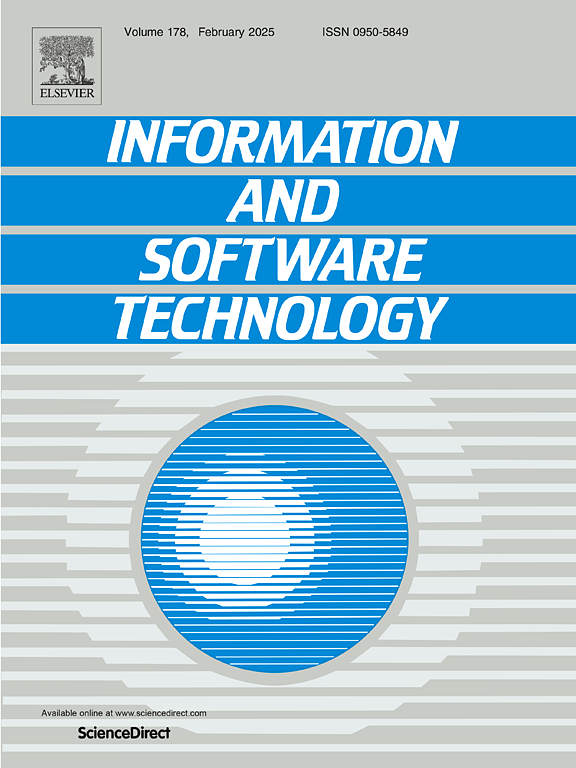Instance gravity oversampling method for software defect prediction
IF 3.8
2区 计算机科学
Q2 COMPUTER SCIENCE, INFORMATION SYSTEMS
引用次数: 0
Abstract
Context
In the software defect datasets, the number of defective instances is significantly lower than that of non-defective instances. This imbalance adversely impacts the predictive performance of the model. Oversampling methods can effectively balance datasets. However, traditional oversampling methods often struggle to capture the underlying relationships between features and are prone to introducing noise during instance synthesis.
Objective
Inspired by the law of gravity, we propose a novel oversampling method based on instance gravity (MOSIG).
Method
This method begins by introducing a new metric, instance gravity, to measure the similarity between instances. Subsequently, feature models are constructed, and instance groups are generated. Instances that meet specific conditions based on instance gravity are then identified within different instance groups. Finally, we propose a novel method for synthesizing defective instances by assigning weights to instances according to their gravity.
Results
Experimental results demonstrate that MOSIG significantly enhances the predictive performance of both the CART decision tree and Naive Bayes models across 21 publicly available software defect datasets. The experimental results are further validated using the Friedman ranking and Nemenyi post-hoc test, confirming that MOSIG is statistically significant.
Conclusion
MOSIG represents a more promising oversampling method.
求助全文
约1分钟内获得全文
求助全文
来源期刊

Information and Software Technology
工程技术-计算机:软件工程
CiteScore
9.10
自引率
7.70%
发文量
164
审稿时长
9.6 weeks
期刊介绍:
Information and Software Technology is the international archival journal focusing on research and experience that contributes to the improvement of software development practices. The journal''s scope includes methods and techniques to better engineer software and manage its development. Articles submitted for review should have a clear component of software engineering or address ways to improve the engineering and management of software development. Areas covered by the journal include:
• Software management, quality and metrics,
• Software processes,
• Software architecture, modelling, specification, design and programming
• Functional and non-functional software requirements
• Software testing and verification & validation
• Empirical studies of all aspects of engineering and managing software development
Short Communications is a new section dedicated to short papers addressing new ideas, controversial opinions, "Negative" results and much more. Read the Guide for authors for more information.
The journal encourages and welcomes submissions of systematic literature studies (reviews and maps) within the scope of the journal. Information and Software Technology is the premiere outlet for systematic literature studies in software engineering.
 求助内容:
求助内容: 应助结果提醒方式:
应助结果提醒方式:


